WE Can Change the World
When people have ideas to make the world a better place, most of the time if they are not wealthy or have a position of power, their idea never takes off the ground. That all changed with WE, an international charity that empowers people to make the world a better place. So far some of their accomplishments include giving over 1 million people access to clean water and sanitation, 200 thousand children education, and over 14 million dollars fundraised by students supporting local and global issues.

One of the main focuses of WE is in the educational field, specifically supporting teachers with free resources to help empower their students. They have multiple modules that teachers can access through their WE Schools website, which allows anyone to sign up and use their resources with no cost. Thye partner with OneNote, a popular note taking program that I showcased during this screencast. Below is an image of the introductory page to WE Schools, which outlines their mission as well as the features they have.
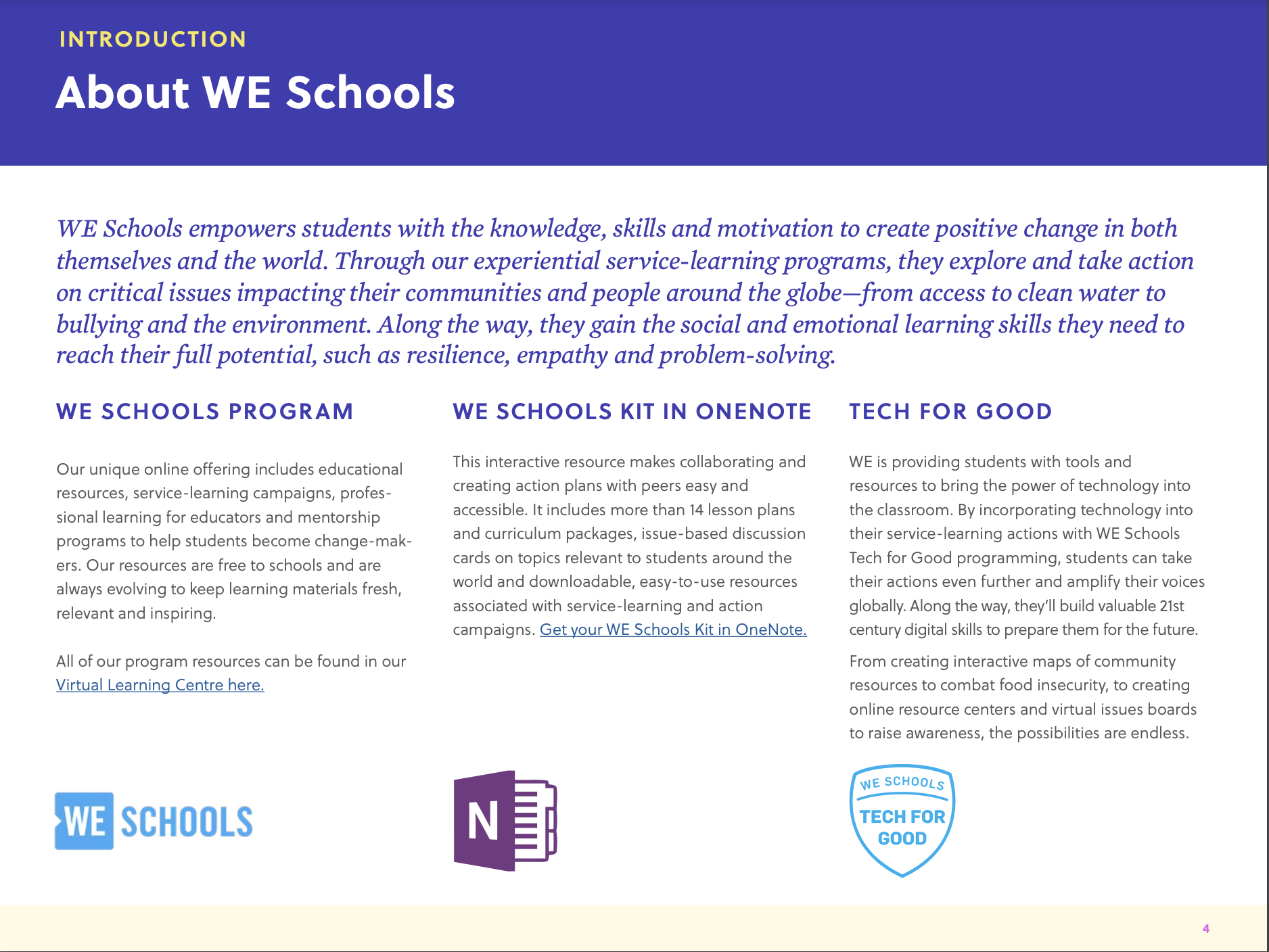
The tool that stuck out to me was the WE Schools Foundational Module, which helps teaches foster a safe and inclusive classroom. Educators talk a lot about how important it is the be inclusive and the benefits of it but sometimes fail to give actual strategies. This module gives tips on how to be supportive, as well as 5 lessons on how to create a caring classroom. For teachers who may struggle with coming up with ideas, this module is the perfect starting point to change their classroom for the better. On the other hand, for teachers who may have become indifferent of students or fail to make changes in their classroom, this module can help them come to understand the importance of inclusion and how WE is helping ensure its success.
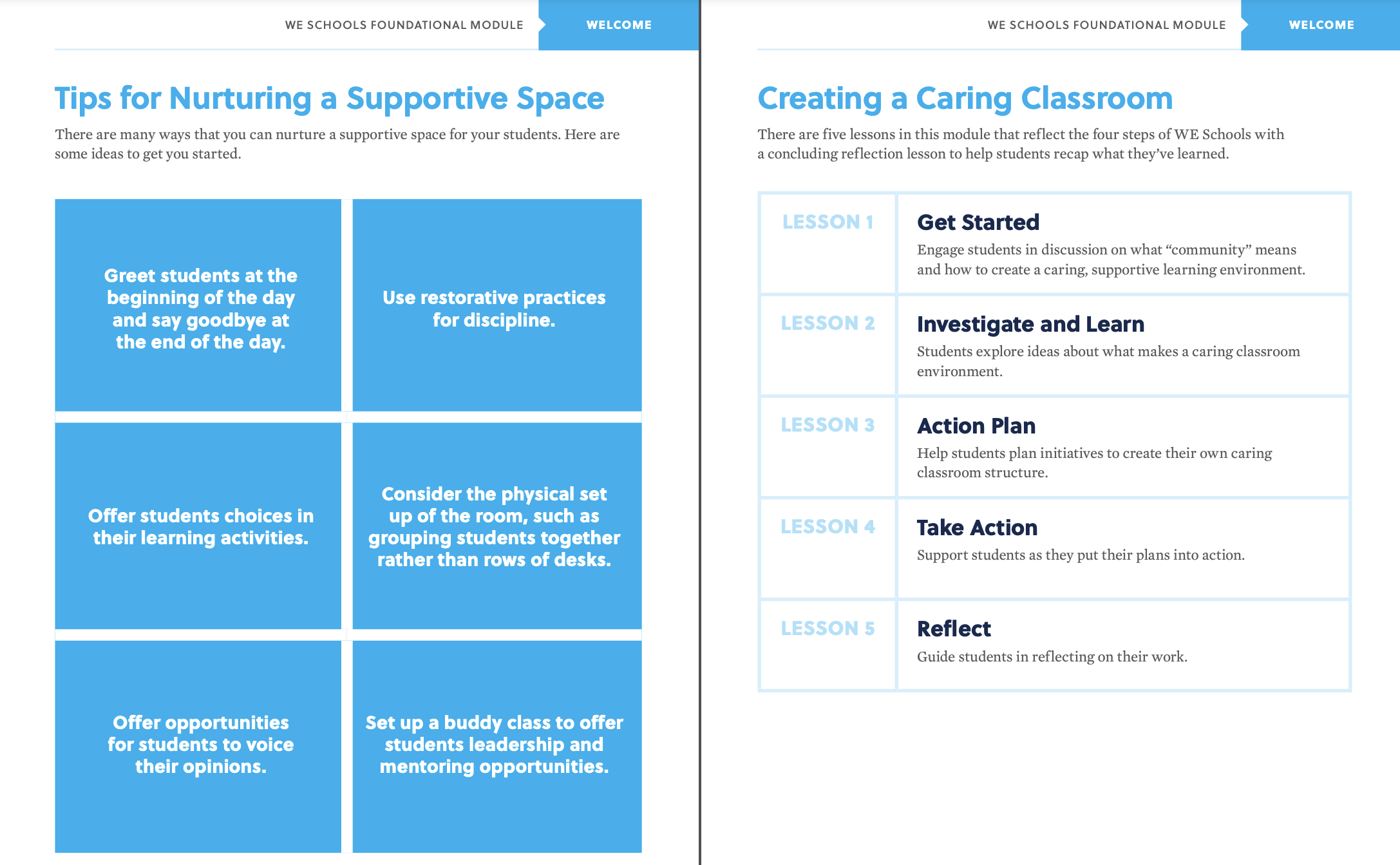
The WE Charity exists to only help make the world a better place and students in our schools are the future benefactors and contributors to it. As a teacher, it is our responsibility to help foster inclusion in our classrooms; the foundational module is where it starts.
Mental Health and Avoiding Stigma
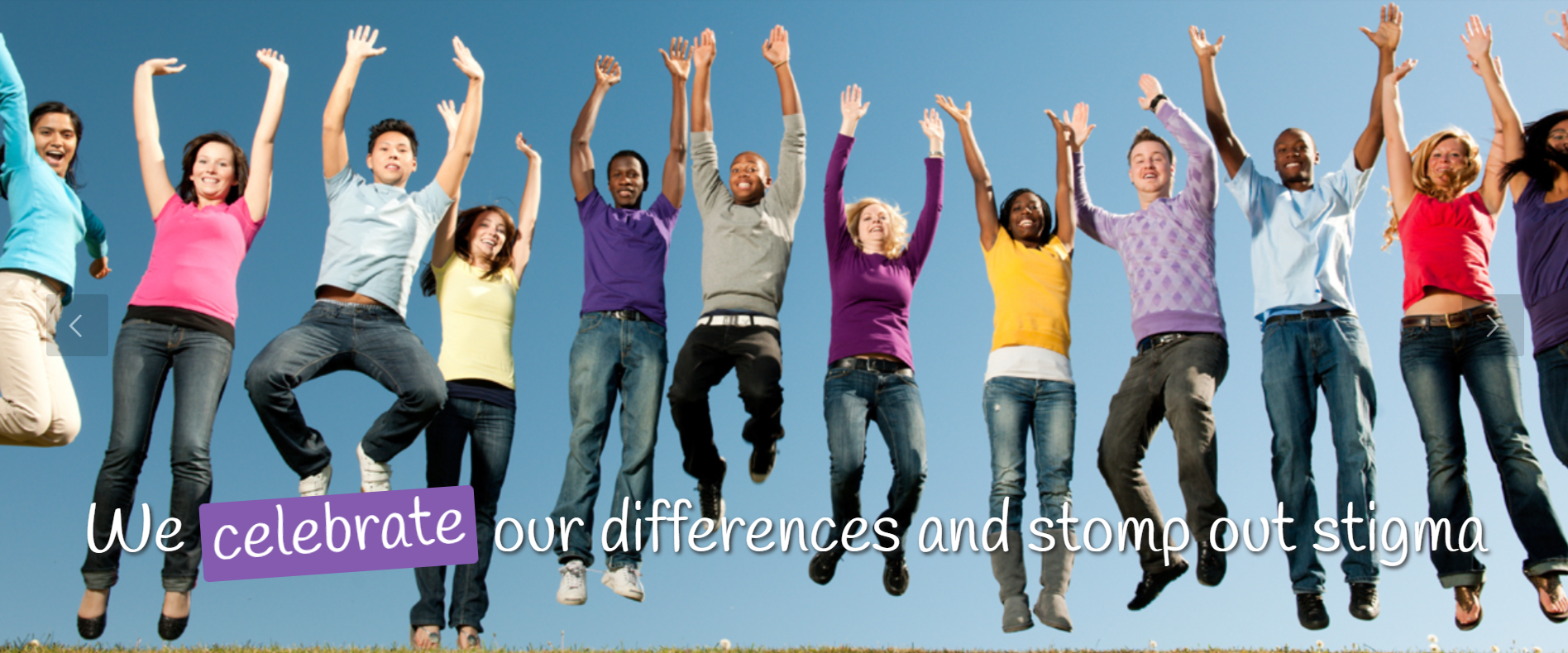
Upon exploring WE Charity and their website, I discovered The Stigma-Free Society. This organization is set on erasing stigma in our communities in all aspects while putting an emphasis on the stigma associated with mental health.
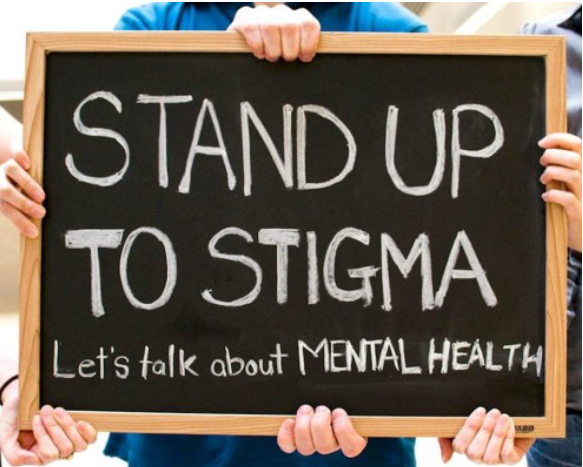
Their website highlights what exactly is stigma, the effects of stigma and how to take action in living stigma-free. “Stigma is a mark of disgrace that sets a person apart.”. They explain that stigma creates prejudice and prejudice creates unjust and negative actions and words. Prejudice and stigma within a classroom creates an environment of hostility and makes it difficult for students to learn at their greatest potential.

Within my own classroom I want to do my best a create and maintain a stigma free zone where my students can free safe and comfortable in their own bodies and their own minds. Using The Stigma-Free Society’s ACTION plan as shown above, I will ensure that when my students walk through my classroom doors, they feel welcomed to be who they are without fear of prejudice and stigma.
Links:
A Stigma Free Society
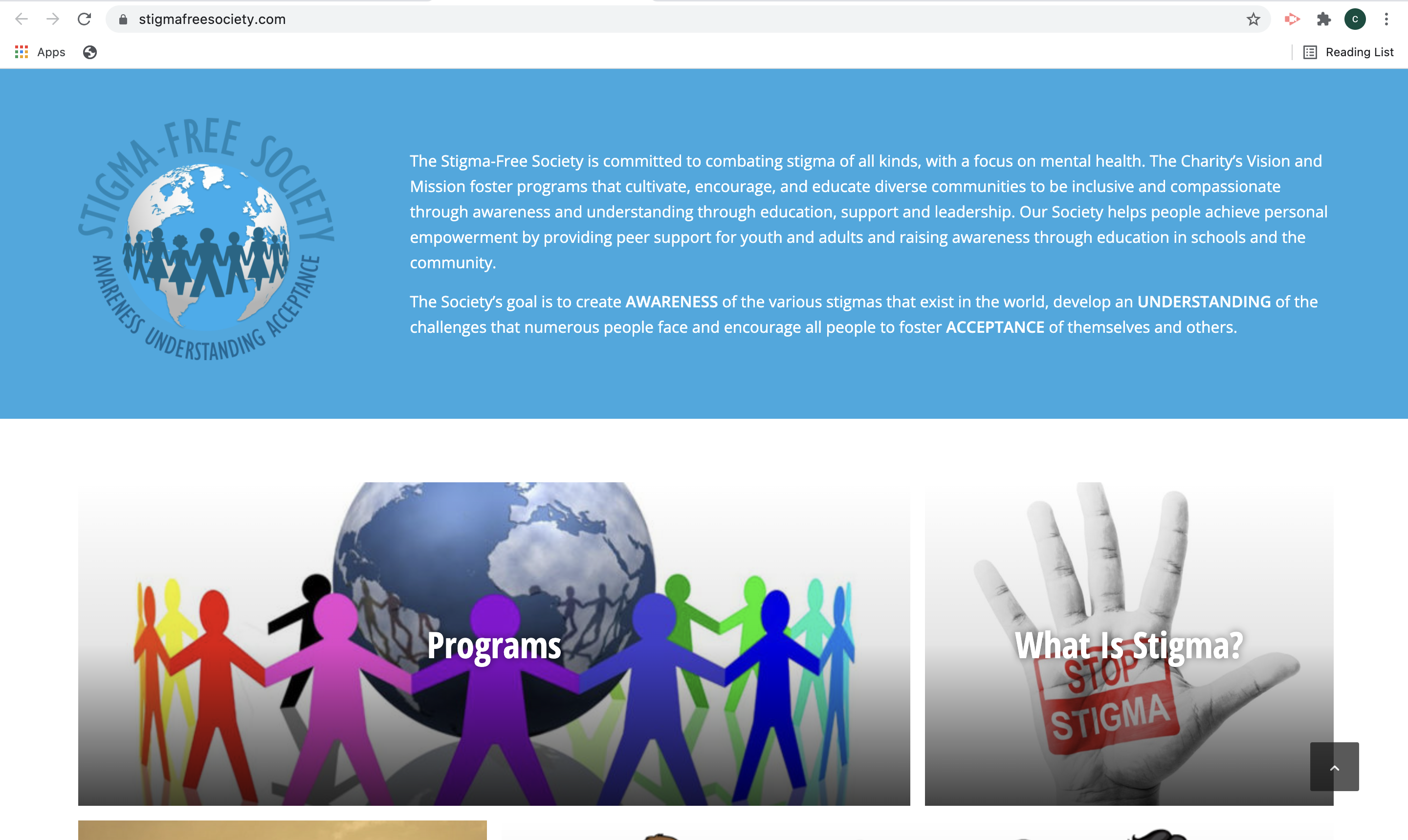
This is the home page and mission statement of this organization. That mission is very clear in the sites name, simply a stigma free society where all stigmas are eliminated and especially those that pertain to mental illness. They have many tool kits for business or personal use, but the one that will be focusing on will be one designed specifically for students.
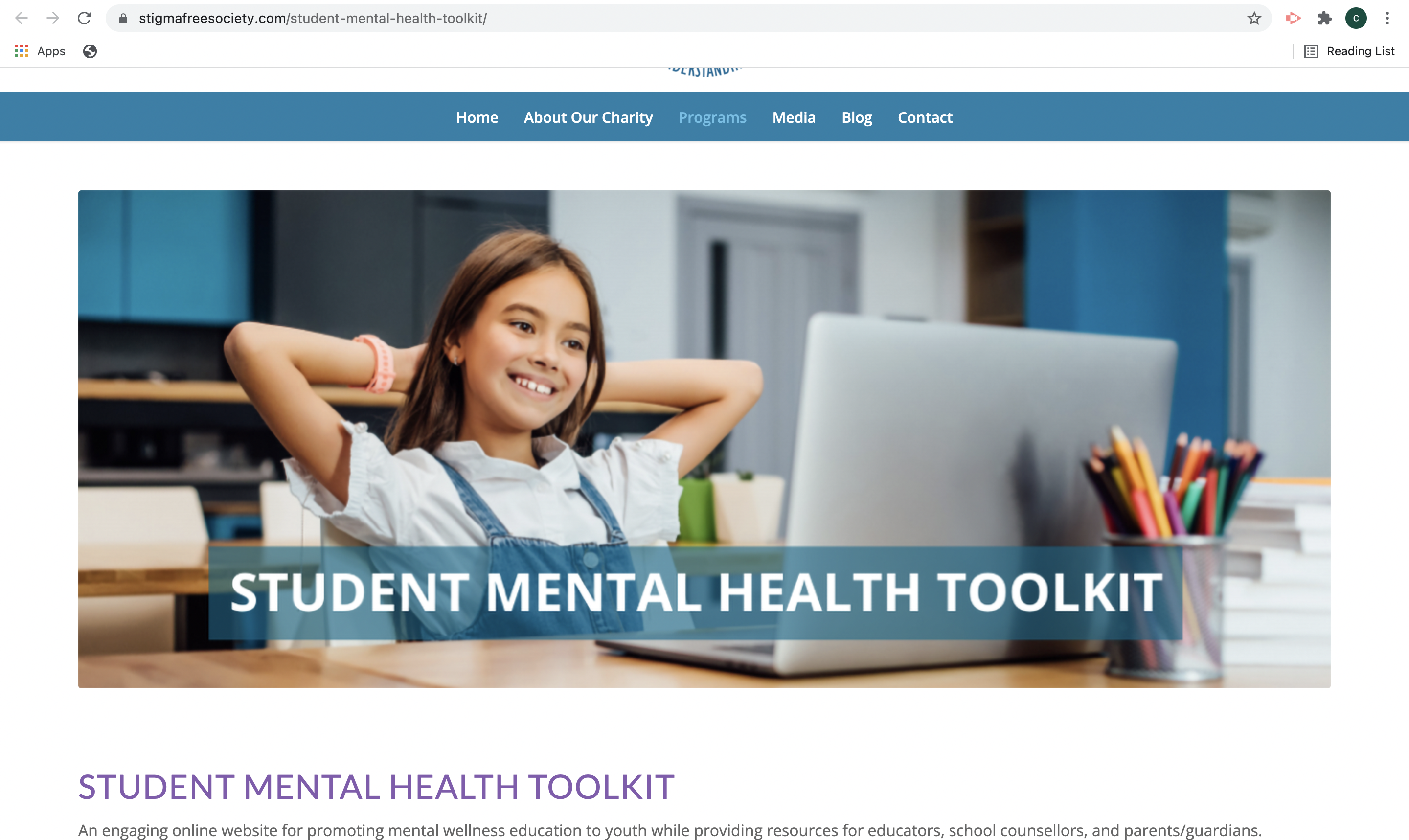
This kit has many resources that will help students better understand how to handle and help their mental state. It has cross-subject lessons so a wide range of teachers can implement this into their teachings. It also comes with comic books that teach students about those that are diversely-able and how to include them in groups and how to think about how to empathize with them. Plus countless other tools that will help teachers grow their studnets’ understanding of themselves and others.

By going to WE.org I was able to navigate to the Stigma Free Society site where I found the focus of today’s blog. WE is a very useful organization for all teachers to help broaden and bolster their teachings.
WE Teachers and Mental Heath
This world is in the hands of the generations to come. We have growing issues that must be identified and addressed properly, and that comes with educating and advancing the next generations. Our generation must do the planning, research, and educating to enable the next generation to make big changes.
Sadly, I’ve been hearing this statement since the time I was in elementary school. So what generation is the one to actually be the educators, and which will be the changemakers?
It seems like ours. WE.org is an organization with this plan set in mind. WE is empowering students of all age to make changes and put their best hand forward in attempt to help in any way. Charity events, nonprofits, community outreaches, so on and so on, the goal is to create a generation of students who mind the well-being of others. To mind the well-being of others, they must first mind their own.
The teachers of WE are taught, through a free program, how do address mental health lapses or disorders in their students.


Being able to address these mental conditions is teaching for the future. This impacts the students ability to learn and socially interact in school now, but impacts their mental health for the future. Not every single student will be perfect, and preparing teachers for all different types of situations will increase their class awareness and broaden their ability to teach, reaching and impacting a larger audience during their time. Moreover, if this module from WE.org is made mandatory in teacher education programs, inclusivity and mental health will be no issue for future generations to combat.
Trauma Informed Classrooms

I chose to explore the lessons available at the WE Virtual Learning Center that focused on childhood trauma and how it can affect a student’s experience in the classroom. This topic is extremely important and not often talked about, as many people don’t know how to handle children who have gone through harmful experiences both at home and at school. I was glad to find an in depth course on how to address topics such as domestic violence, racial discrimination, and bullying on this site.
The module I read focused on trauma informed classrooms and the necessity of teachers learning to understand students who have experienced violence and abuse in their home lives. Even if my teachers had read such material during their time in college, none of them were particularly sympathetic or understanding of what my home life was like and how it impacted my ability to hand in homework or focus in class. Brushing up on materials like this module and remembering my own K-12 experiences help me function as a more empathetic and capable teacher.
Included below is a screenshot of some of the information from the module that I found useful. I hope that it will also be beneficial for readers to see so that they can use the information to shape their teaching methods in the future.
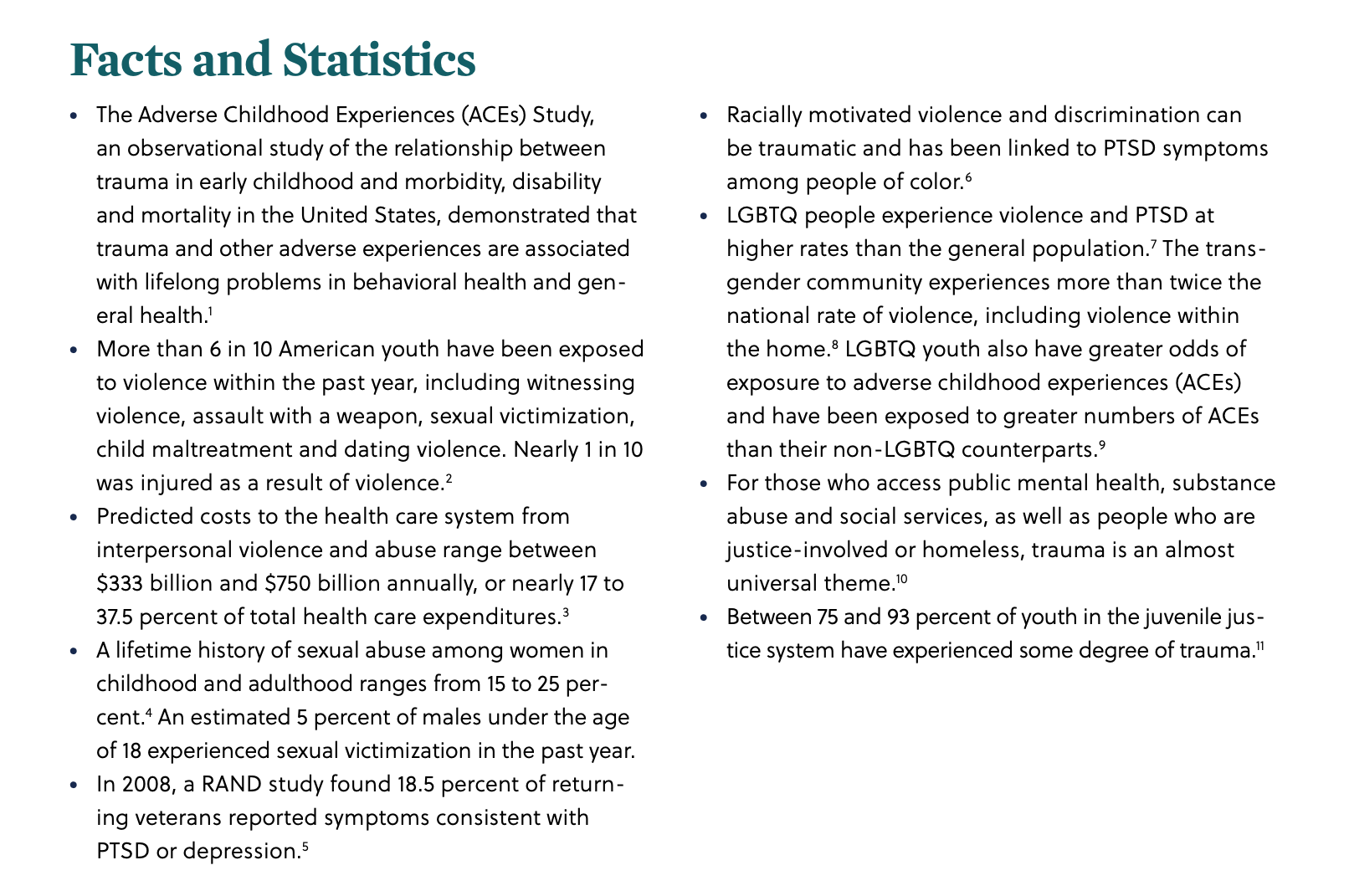
WE Are Silent: Teaching Children’s Rights
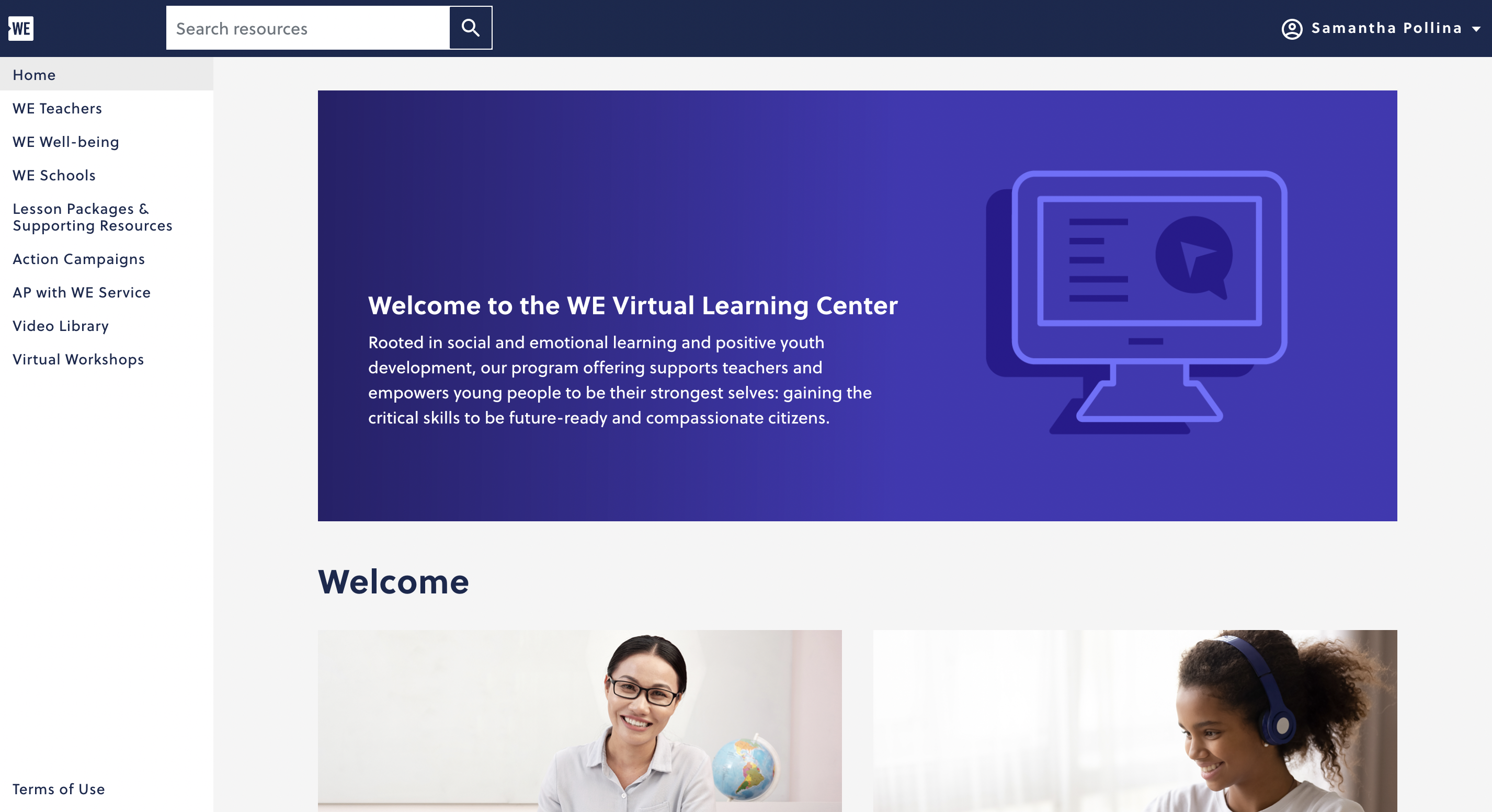
This week I took a look at WE.org, a website that provides resources and campaigns to change the world. It provides not only campaigns and volunteer work for anyone who wishes to become involved in bettering the planet, but also educator resources. Using the WE Virtual Learning Center teachers can locate lesson plans and other resources that focus on educating students on ways to promote a healthier society.
Through this website, I located a great lesson plan to utilize in a high school Social Studies classroom. The lesson focuses on children’s rights. The resource provides multiple days of plans, however, I will be focusing on Lesson #3. This lesson allows students to become aware of the denial of rights to children globally and how to become an advocate.
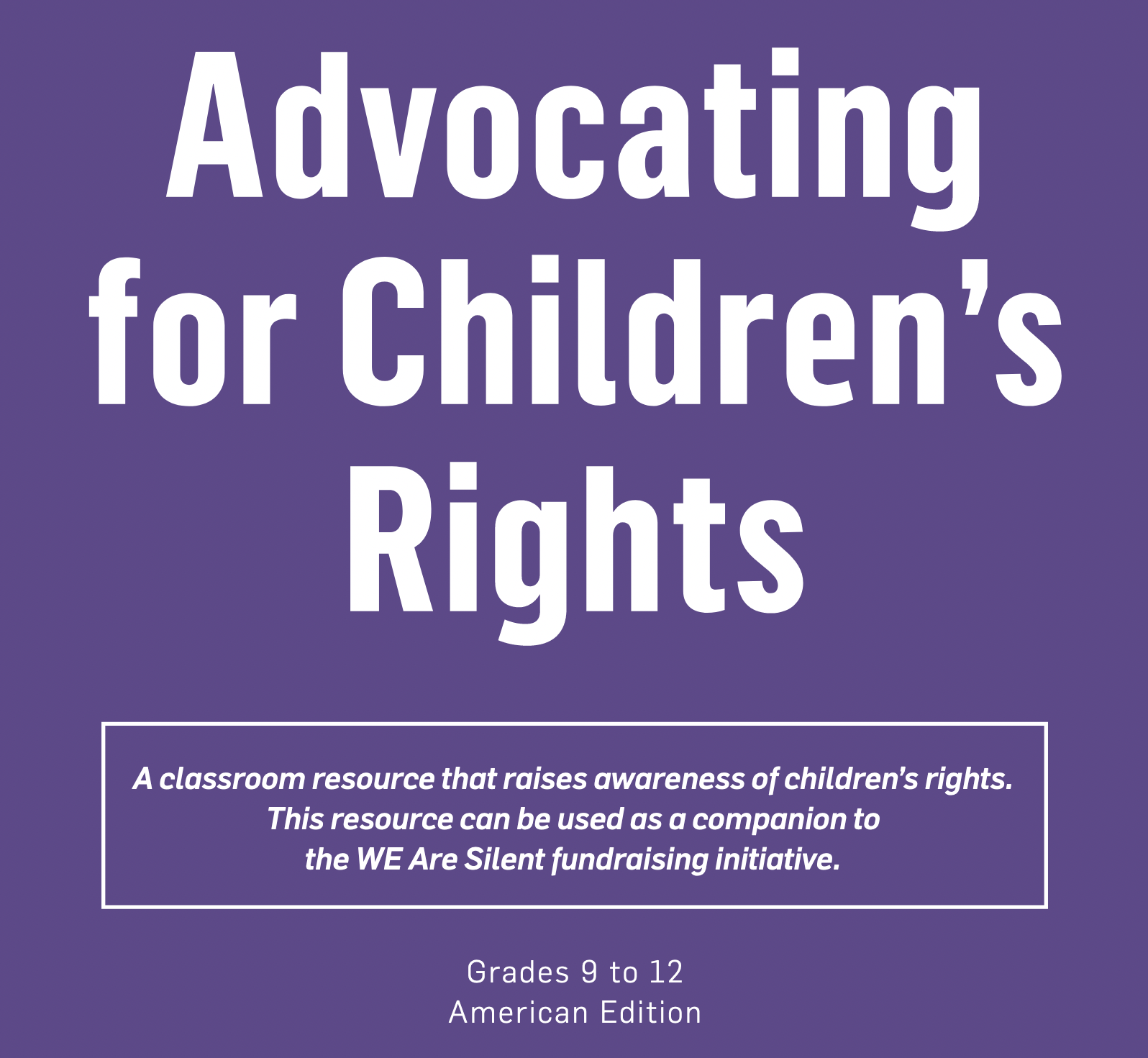
The lesson begins by telling the story of Malala Yousafzai, a young girl from Pakistan who advocates for the educational rights of girls. The plan provides a video as well as multiple questions to use for class discussion. This will provide students to share what they have learned so far, their point of view, and ask any questions they may have.

Next, the class will be divided into groups and provided a sheet of chart paper. Each group will answer the question “How are children and young people denied their rights?” The groups will then write constructive feedback on each other’s charts (using different colored ink).

The class will then discuss their charts and what the other groups wrote on their charts. Students will then provide an example of children being denied their rights and how they could become an advocate for those children. This will assess the learning of each student.
This lesson plan provides students with knowledge of children’s rights and advocacy. It also teaches them about the story of Malala Yousafzai and Pakistan. Students will be able to display their ability to write coherently and determine the meaning of words and phrases. This is a great lesson to use in a high school Social Studies class that teaches students about diversity and human rights as well as tying in the Sustainable Development Goals.
Thank you for reading!
Samantha Pollina
Teaching Service through WE Schools
For this week’s blog, I checked out the WE.org website and did some investigating of the WE Schools Foundational Module. This is an approach to education that emphasizes service learning and teaches students how to make positive changes in the world around them.

One of the most important aspects of education is creating an atmosphere that allows students to succeed. Our students will not grow as much as they should if they feel unsafe or uncomfortable when they are trying to learn. We need to eliminate negative distractions and let our students know that we value them and their well-being.

There are 5 separate lessons that we can use as a starting point. These lessons can be applied to any number of issues but all include the concept of service and collaboration. When we include our students in the direction of the classroom we can see increased engagement and teach responsibility.
Thanks for reading! If you like what you read (or don’t like what you read) let me know! @PatrickWCrowell
Mental health in the classroom
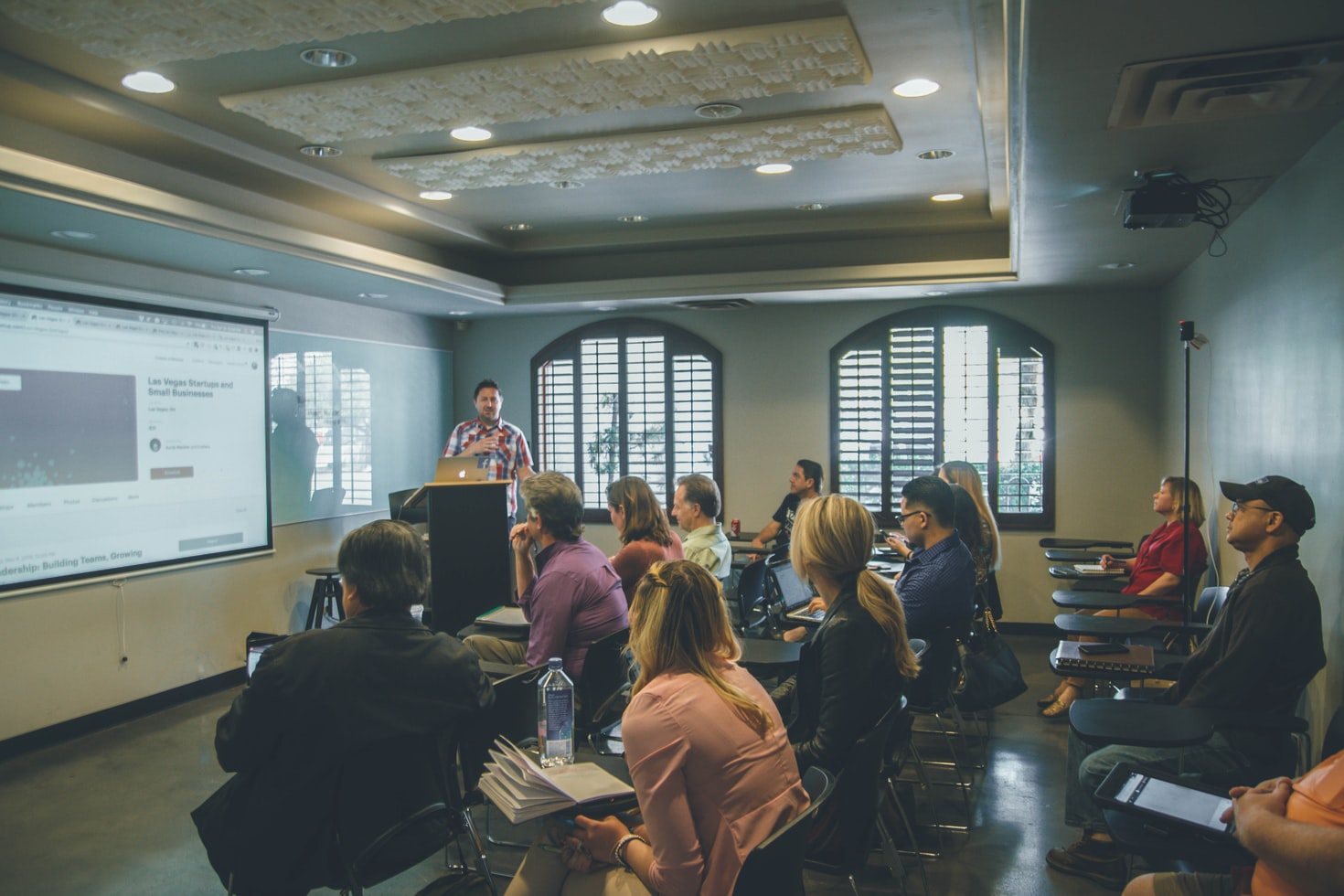
The WE Teachers Social and Emotional Learning Module provide activities and lessons for ways teachers can incorporate emotional wellbeing in the classroom. This is important because it creates an environment of mutual respect for a student not just as a learner but as a person experiencing life beyond the classroom.
This makes for a better learning environment overall and even contributes to the social aspect students experience in school that involves making friends and feeling like they belong. When there is less anxiety surrounding their social life, they have more room to learn better.
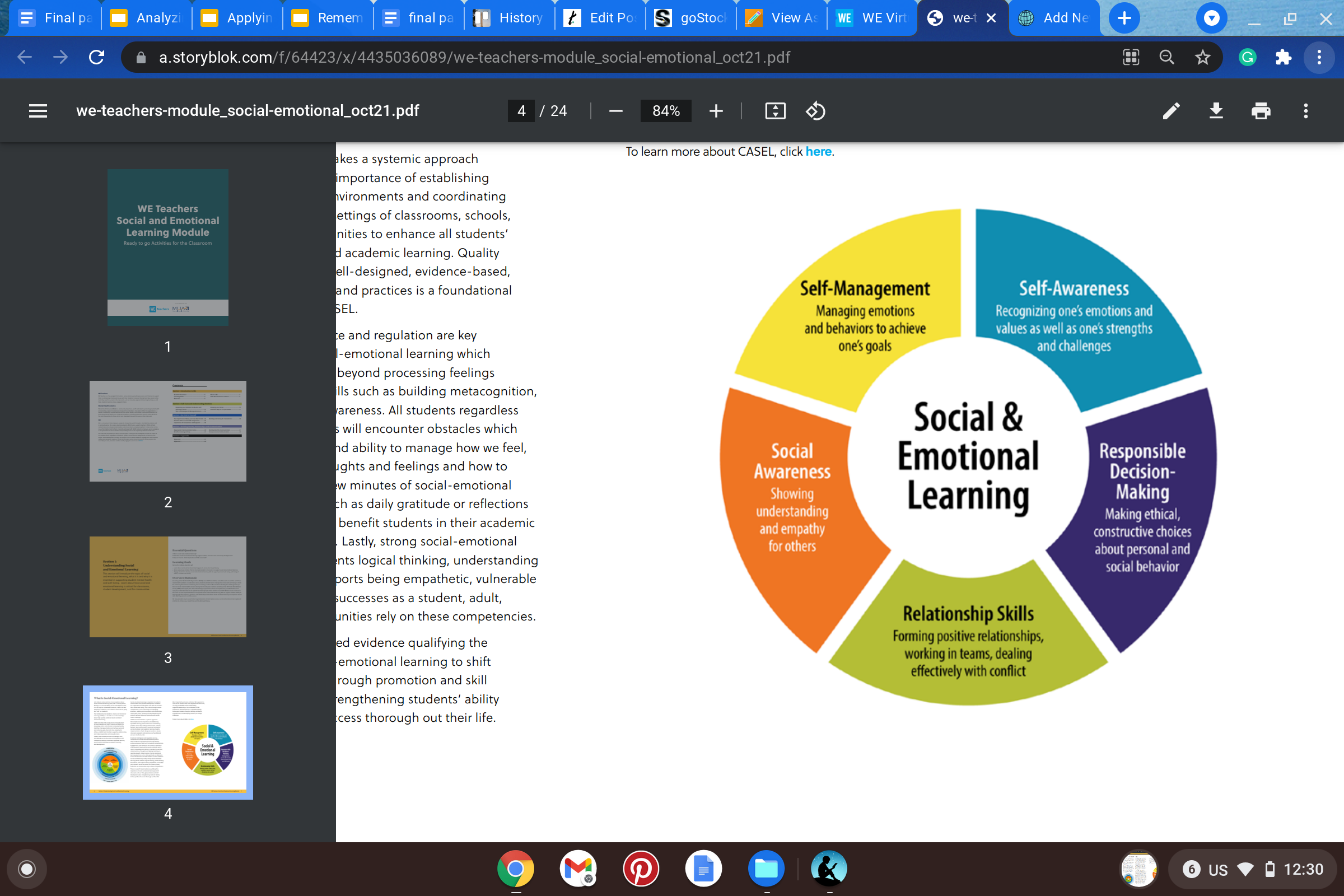
The module also made a point of explaining how this is not a teaching method that goes “soft” on students or is only for handling “misbehaved” students. This is about treating students with compassion and helping teachers understand how to care about every student’s individual wellbeing as a whole.
This is extremely important for developing minds, because many students can live in dysfunctional households, or have experienced trauma that can be triggered at school. It’s important for teachers to know how to avoid keywords or situations that can trigger a student, as well as how to navigate mental health issues in the classroom like anxiety or panic attacks.
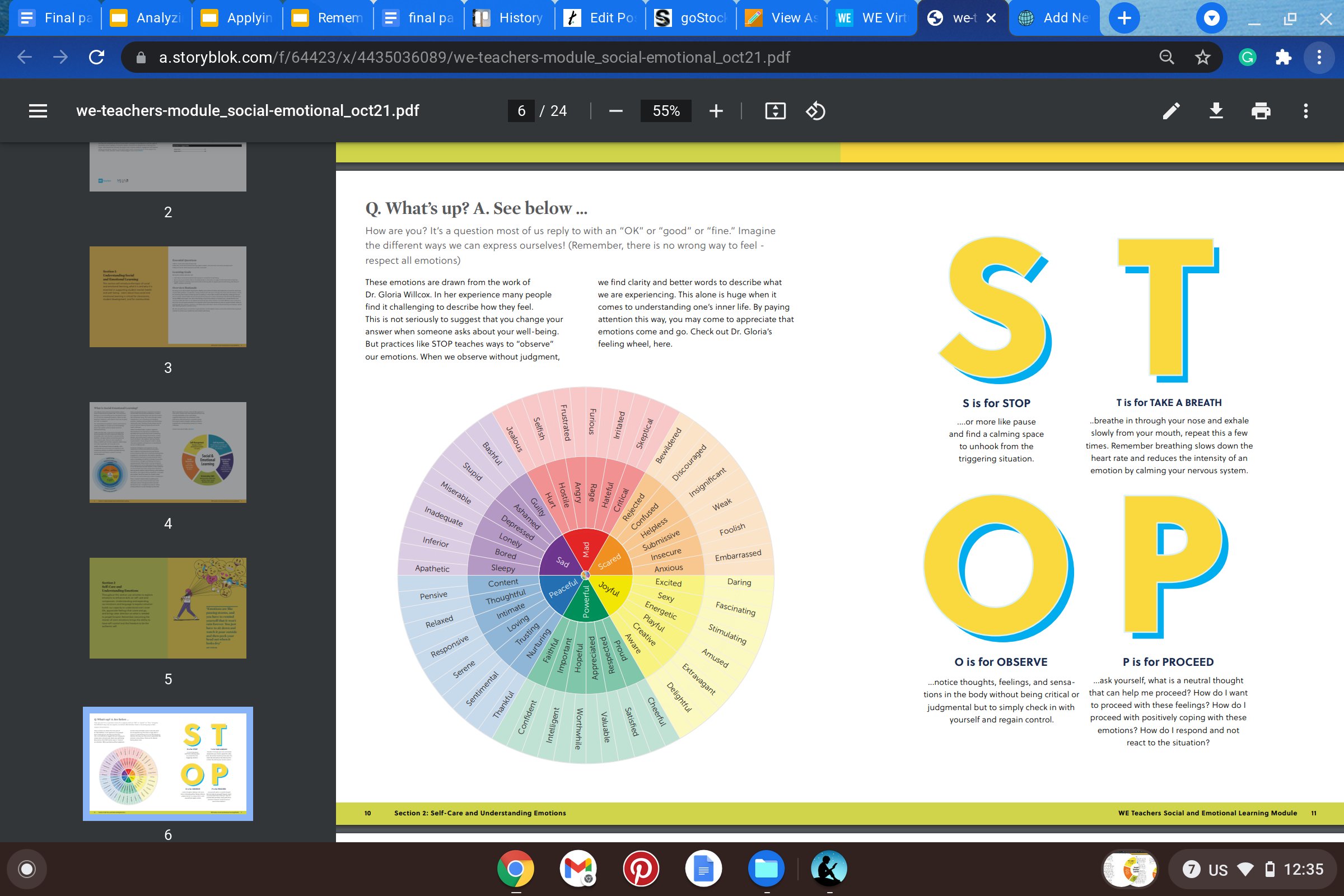
The module also discusses regular emotions that can inhibit a student from learning at their best potential, even if it seems like something simple such as nervousness, shyness, embarrassment, etc. You can never know how much social anxiety, shyness, or embarrassment can inhibit a student from learning at their highest potential or having the right amount of confidence to be outgoing and eager to learn.
This is why this module is so useful in the classroom.
This module can also help forge better relationships between teachers and students, and even students and fellow peers, which is something that WE Teachers consider often when using technology and other resources, as seen in the below tweet.
WE Schools has a lot of other modules that focus on themes of emotional wellbeing. Themes like Diversity and Inclusion, Anti-Racism, and Equity & Human Rights all tie into being aware of the importance of social and emotional health in the classroom.
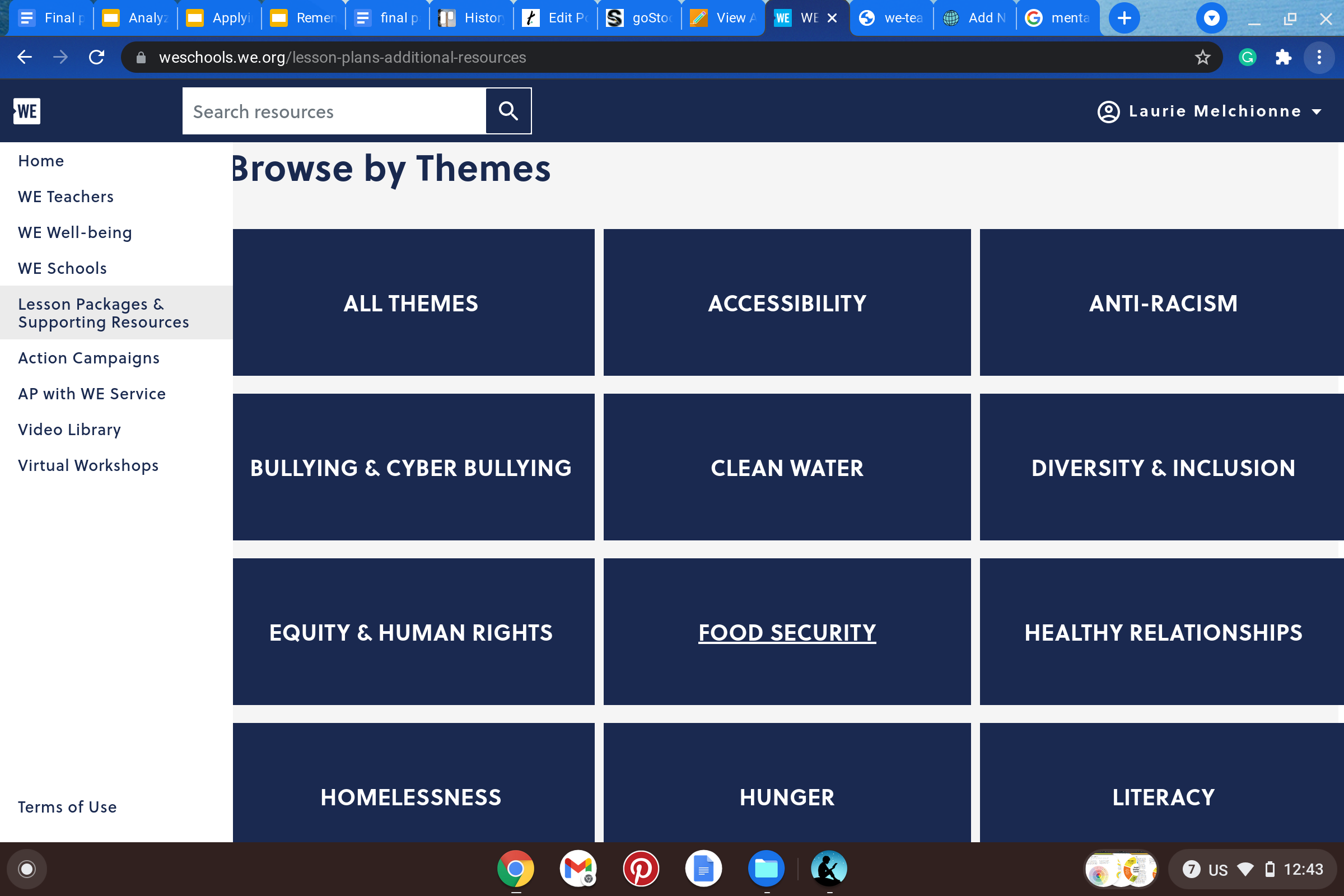
For example, the Anti-Racism module dives deep into racist ideas, responses, where they can stem from, and how to handle inequity in school. It defines different ways racism can occur through definitions of microaggressions, implicit bias, intersectionality, etc. It even covers sexuality discrimination, creating a module that ensures no marginalized group goes unnoticed, and that it can be addressed and handled effectively in real life by educators.
In addition to the modules, WE Schools provides an entire page for action campaigns that can provide students and teachers with resources to address problems in the real world and make their voices heard.
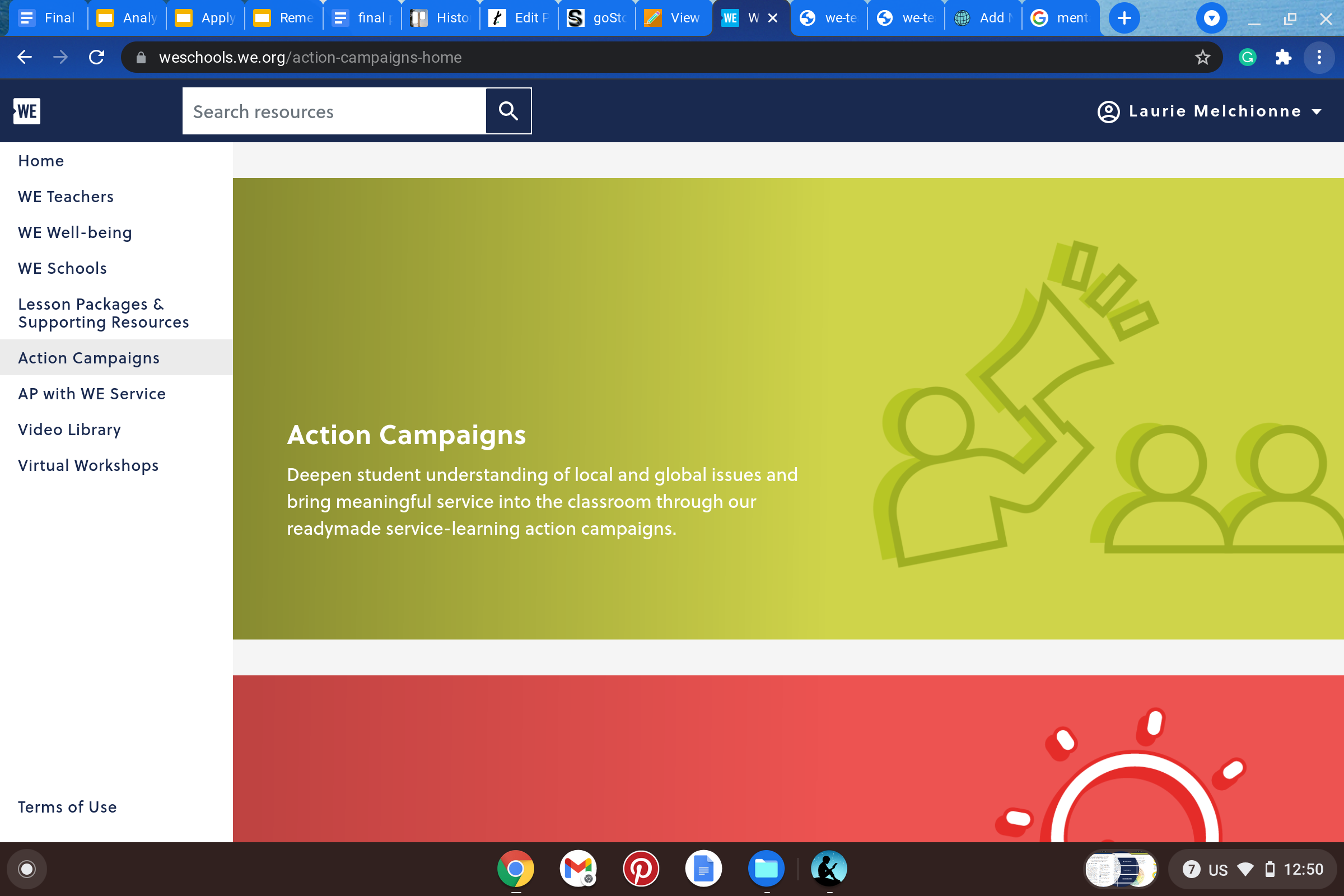
Overall, the website and the modules themselves provide resources that are extremely thorough for students and educators. If there is a topic or a problem in the classroom or even the real-world as it affects educators, this website covers it.
Changemakers
After reviewing the WE teachers modules I found that the modules contain many important bits of information. There were nine modules that were created for all grade levels and mention important aspects of students like mental health, bullying, diversity, poverty, youth violence, pandemic information, anti- racism, trauma, and social/emotional learning. These modules even offered courses to create a better understanding of the issues.
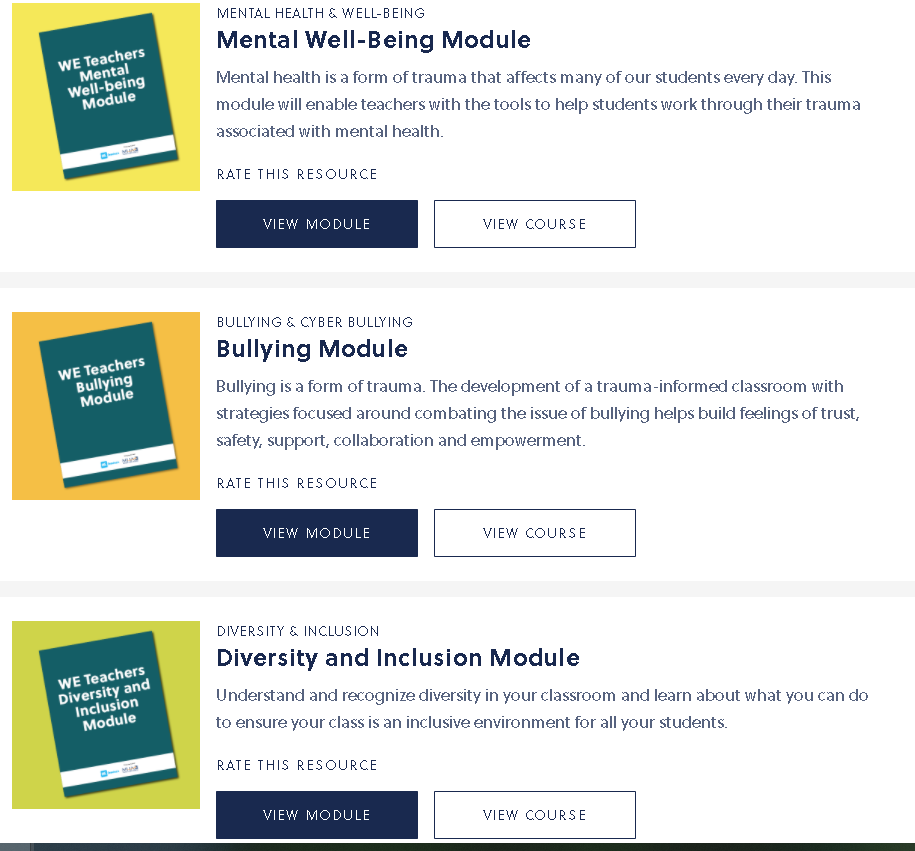
I believe it is incredibly important to create a safe learning environment where students feel comfortable to learn. My definition of a safe learning environment is an environment where everyone gets along and are safe from the many issues that will make them feel uncomfortable, unwanted or afraid to be themselves. These modules offer an opportunity for educators to learn how to approach these issues and be sure that they do not become problems in the future. The module that I dove deepest into was the mental well-being module because I believe it has one of the greatest impacts on students learning. I personally understand the impact of mental health because my grades have suffered in the past due to issues outside of the classroom and I would like the opportunity to identify the students struggling so that I may make adjustments to their learning. The module was a fifty-two page pdf which covered a variety of issues concerning what to do for specific disorders, statistics about the disorders, and how the disorders affect the students.
I highly recommend that the readers of this blog give these modules a look because they contain lots of information that may be helpful in understanding and interacting with others. If you are interested you can view these modules herehttps://weschools.we.org/we-teachers. You will have to login with an email account to access the modules but it is completely free.
WE Teachers Mental Well-Being
This week we looked at We that can help us use these tools in our classrooms. This tool helps teachers look for signs in their students of their mental health. Knowing when a child is down, it is important to make sure your students are okay and that nothing is going to distract from learning. Teachers are there for students to teach them to to also be their counselor. Teachers always have to put their students before anything and that goes with making sure their mental well-being is good. But first, teachers must be aware of the type of poor well-beings like trauma, stress, self harm, depression, health conditions, anxiety, and many more.
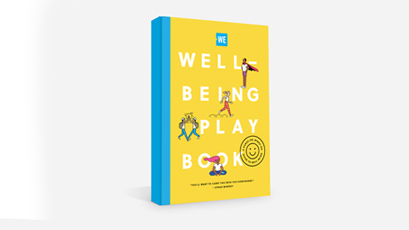
By teachers being aware of mental health and mental health problems can help them find solutions for their students or the right help for their students. Sometimes playing games and doing fun activities can help students stay active and keep their mind healthy and busy. Checking up on your students and learning about their life outside is a great start to learning their well-being.
Recent Comments